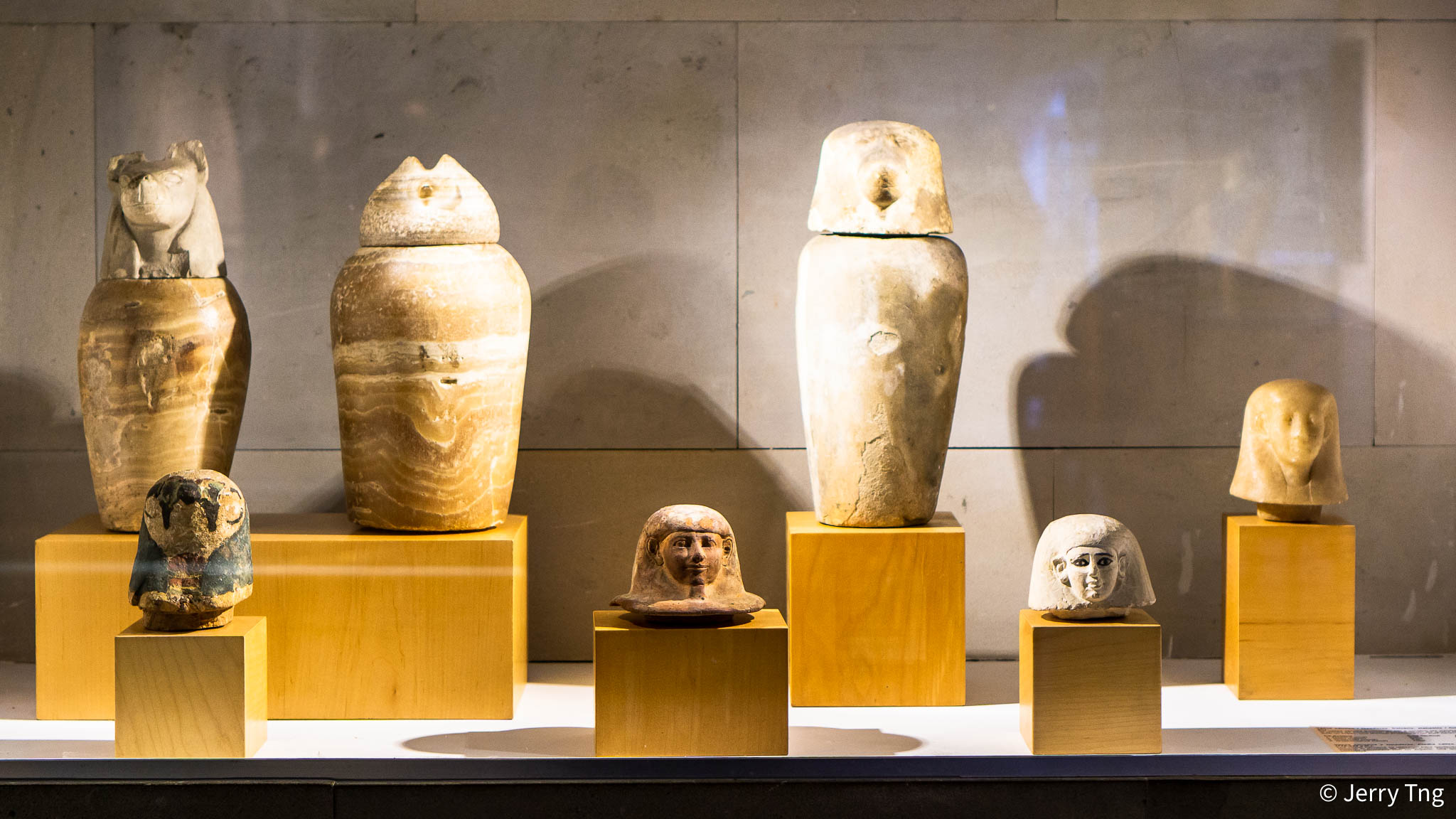One of the lesser known museum in the city of Barcelona focused on an ancient civilisation that has fascinated me since young. Get ready to walk like an Egyptian!
History of Egyptian Museum of Barcelona
The Egyptian Museum of Barcelona or Museu Egipci de Barcelona opened in 1994 and was the first of its kind in Spain. Today it houses a valuable collection of over 1,100 pieces, a library with more than 10,000 documents and classrooms for educational activities. The permanent exhibition is organised round key themes, such as the figure of the pharaoh, the gods, funeral practices and the body cult.
Fascination with Egypt


Passion – without that it would probably never have come to the founding of the museum. Jordi Clos Llombart, a Spanish hotelier, collector and patron, has been fascinated and enthused by ancient Egyptian culture for years. In 1992, he exhibited around 70 of his previously acquired archaeological finds in the Hotel Claris in Barcelona.



The collection was so well visited and received so much positive response that shortly after an archaeological foundation was founded: the Fundació Arquelogica Clos. In 1994, the foundation opened the Museu Egipci. Today, more than 1,100 exhibits can be seen here – the museum is home to one of the leading private collections from the time of the Pharaohs. Further the country’s first school of Egyptology is located there since 2000.



Subsequently, the increase in the size of the collection and the number of visitors allowed it to move to its current home on Carrer de València, in 1992. Since then, the collection, the number of visitors and the museum itself have not stopped growing.
The Permanent Exhibitions of the Museu Egipci
The museum has three main exhibition areas with temporary and permanent exhibitions, lecture rooms equiped with I.T. systems and a library with over 10,000 documents.



From Egypt to the Eixample
A visit to the museum is a journey through the history of this ancient civilisation and enables you to see some imposing works, including a statue of Ramesses III, mummies and hundreds of other items: jewellery, funeral steles, domestic utensils, portraits and so on. Thanks to the Clos Archaeological Foundation, the museum also publishes material and offers a master’s in Egyptology, as well as organising temporary exhibitions, children’s activities, research projects and even expeditions to Egypt.

The beginning is divine: when you enter the museum, you immediately are immersed in the lifeworld of the pharaohs. The rulers of ancient Egypt saw themselves as successors and plenipotentiaries of heavenly deities. Statues like those of Ramses III or reliefs with illustrations of Cleopatra VII testify to the power and cult around the pharaohs.

The importance of personal hygiene was shown by finds that were used to make cosmetic products.



Particularly impressive is the area with exhibits and explanations about the burial rituals in ancient Egypt. In addition to urns and a box for the storage of organs there are fascinating mummies to see. And not “only” of humans, but also of a cat: It was considered as an earthly embodiment of the deity Bastis.


The tour continues to focus on grave and burial objects: Magnificent sarcophagi, elaborately manufactured masks, jewelry and models of deities – all this can be admired here.


On the first floor of the museum even a mortuary temple from ancient Egypt was rebuilt in its original size so that visitors can understand more easily how funeral ceremonies were conducted at that time.




The permanent exhibition concludes with finds and explanations of the most important deities and their worship.

Other themed areas in the basement are devoted to the priests and aristocrats of the time. Further there are household items and precious jewelery, including gold amulets on display.

0 comments on “Barcelona’s Egyptian Museum”